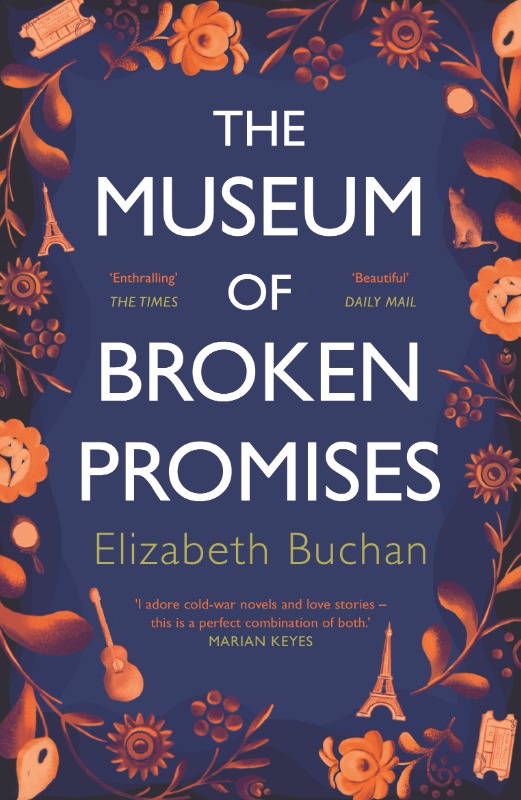search
date/time
 | Yorkshire Times A Voice of the Free Press |

Artis-Ann
Features Writer
5:12 PM 29th January 2021
arts
What Would You Bring? : The Museum Of Broken Promises By Elizabeth Buchan

The narrative of the novel toggles between three time-frames, as Laure recalls past events in the Prague of 1986 and Berlin in 1996, amid her life in the Paris of today, but following the plot is not hard. In 1986, Laure is recovering from the sudden death of her father and has given up on her university degree to work in Prague, as nanny to Jan and Maria, the children of Petr and Eva Kobes. On a visit to a marionette show, she meets Tomas who is a member of a dissident rock group, Anatomie. She enjoys a dangerous but genuine love affair with him and suffers the consequences. Her naïve lack of understanding of the political regime she is living under, has left her vulnerable. The savagery of events in Prague force Laure to grow up and cast a dark shadow over her life.
Among the exhibits in The Museum of Broken Promises is a framed train ticket from Czechoslovakia to Austria. This is Laure’s contribution and it hints at the secret in her life — her brush, that summer, with political rebellion behind the Iron Curtain. The novel opens in 1986 on the platform of a bleak Austrian railway station where Laure is waiting for Tomas, a man she hopes will be known as Viktor ‘for Victory’. She is nervous, looking all the time to see if there is a ‘watcher’ monitoring her. At this time, in this location, ‘waiting is an art form’. She is however, to be disappointed; a promise has been broken.

Elizabeth Buchan
I certainly remember watching the news footage as the Berlin Wall came down in 1989 but was aware of little more than the ‘fear’ we had lived with since its construction in 1961. As far as I was concerned, we were never fully cognizant of what unfolded behind the Iron Curtain, but understood that the regime was oppressive. Although the period includes some of the darkest moments of European history, I confess to knowing little detail about the Cold War other than the world of spies as portrayed in film. Although not in my lifetime, I probably know more about Henry VIII or World War One from my history lessons at school, than I do about the ‘Ossis’ and ‘Wessis’, which made this novel all the more appealing.
Also by Artis-Ann ...
Spying Is Lying: The Traitor By Ava GlassFlawed Characters:The Party House By Lin AndersonAn Extraordinary Life: Three Things About Elsie By Joanna CannonWhat A Tangled Web: Wartime For The Chocolate Girls By Annie MurrayPoems And Pressed Flowers: The Botanist By M. W. CravenLaure’s experience in Prague explains why she has become so private that she is at odds with May, the brash American reporter who shadows her in Paris, trying to write a profile for a magazine, and why she is so fiercely self-reliant; but at the end, she finally comes to terms with her past and the love which has never left her.
The plot is a deliberate slow burn but well worth the effort to read it to the end.
The Museum of Broken Promises is published by Corvus